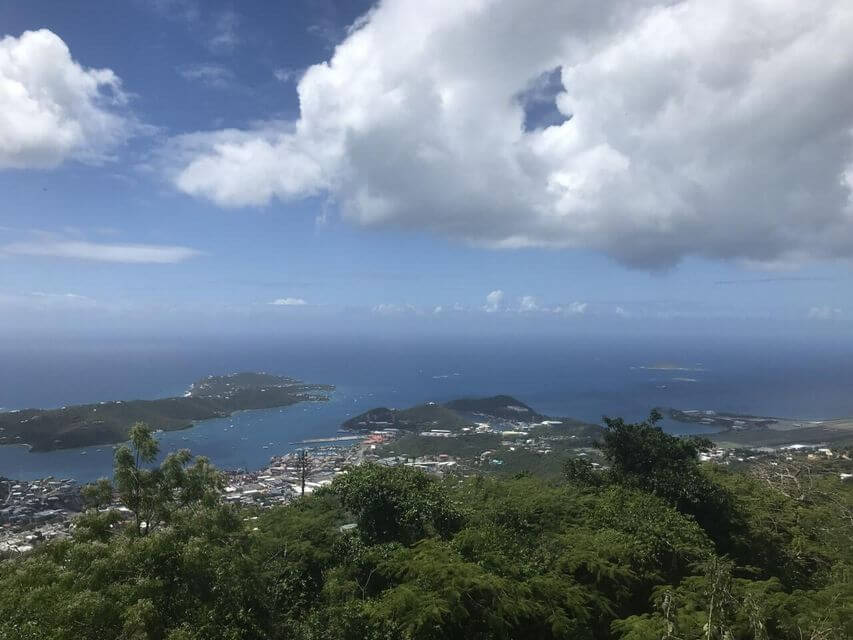If having clean air is of paramount importance to you, the U.S. Virgin Islands should be at the top of your list of destinations to consider, according to the “2021 World Air Quality Report”, conducted by IQAir and published on March 23.
IQAir’s said its 2021 World Air Quality Report is the first major global report based on updated annual World Health Organization air quality guideline for PM2.5.
Among several key findings was the U.S. Virgin Islands’ placement as one of three territories that met the WHO’s updated PM2.5 guideline. Puerto Rico also met the air quality guideline, as well as French territory New Caledonia, according to IQAir.
The report also found that Bangladesh, Chad, Pakistan, Tajikistan and India were among the top five polluted countries.
The key findings of the report are:
- No country met the latest WHO air quality guideline for PM2.5 in 2021.
- Only the territories of New Caledonia, U.S. Virgin Islands and Puerto Rico met updated WHO PM2.5 air quality guideline.
- Only 222 out of 6,475 global cities covered in the report met updated WHO PM2.5 guideline.
- 93 cities in the report had annual PM2.5 concentrations exceeding 10 times the WHO PM2.5 guideline.
- Of 174 Latin America and the Caribbean cities, only 12 (7 percent) met the WHO PM2.5 guideline.
- Of 65 African cities, only one (1.5 percent) met updated annual WHO PM2.5 guideline.
- Of 1,887 Asian cities, only four (0.2 percent) met updated WHO PM2.5 guideline.
- Of the 1,588 cities in Europe, only 55 (3 percent) met the WHO PM2.5 guideline.
- The report covered 2,408 cities in the United States and found that average PM2.5 concentrations rose from 9.6 µg/m3 to 10.3 µg/m3 in 2021 compared to 2020. Of the major cities in the United States, Los Angeles was the most polluted. However, the City of Angels saw an overall decrease in PM2.5 pollution of 6 percent compared to 2020.
- The top five most polluted countries in 2021 were:
- Bangladesh
- Chad
- Pakistan
- Tajikistan
- India
- New Delhi (India) is the world’s most polluted capital city for the fourth consecutive year followed by Dhaka (Bangladesh), N’Djamena (Chad), Dushanbe (Tajikistan) and Muscat (Oman).
- Air quality in China continued to improve in 2021. More than half of the cities in China included in the report saw lower levels of air pollution when compared to the previous year. Pollution levels within the capital city of Beijing continued a nine-year trend of improved air quality, driven by emission control and reduction of coal power plant activity and other high emission industries.
- Central and South Asia had some of the world’s worst air quality in 2021 and was home to 46 of the world’s 50 most polluted cities. The only two cities that met updated WHO PM2.5 guideline were Zhezqazghan and Chu (Kazakhstan).
- Air quality monitoring remains sparse in Africa, South America and the Middle East, although progress has been made by low-cost air quality sensors often operated by non-profit organizations and citizen scientists.
Frank Hammes, CEO of IQAir stated, “It is a shocking fact that no major city or country is providing safe and healthy air to their citizens according to the latest World Health Organization air quality guideline. This report underscores just how much work remains to be done to ensure that everyone has safe, clean and healthy air to breathe. The time for action is now.”
Greenpeace India Campaign manager Avinash Chanchal said, “We understand better than ever before how air pollution damages our health and economies. This report is a wakeup call, revealing how people worldwide are denied access to clean air. Particulate matter air pollution is produced through burning fuels including coal, oil and fossil gas, unsustainable development, and agricultural activities. Addressing the air pollution crisis requires the development of renewable energy resources and clean-powered, accessible public transport. Moreover, solutions to air pollution are also solutions to the climate crisis. Breathing clean air should be a basic human right, not a privilege.

